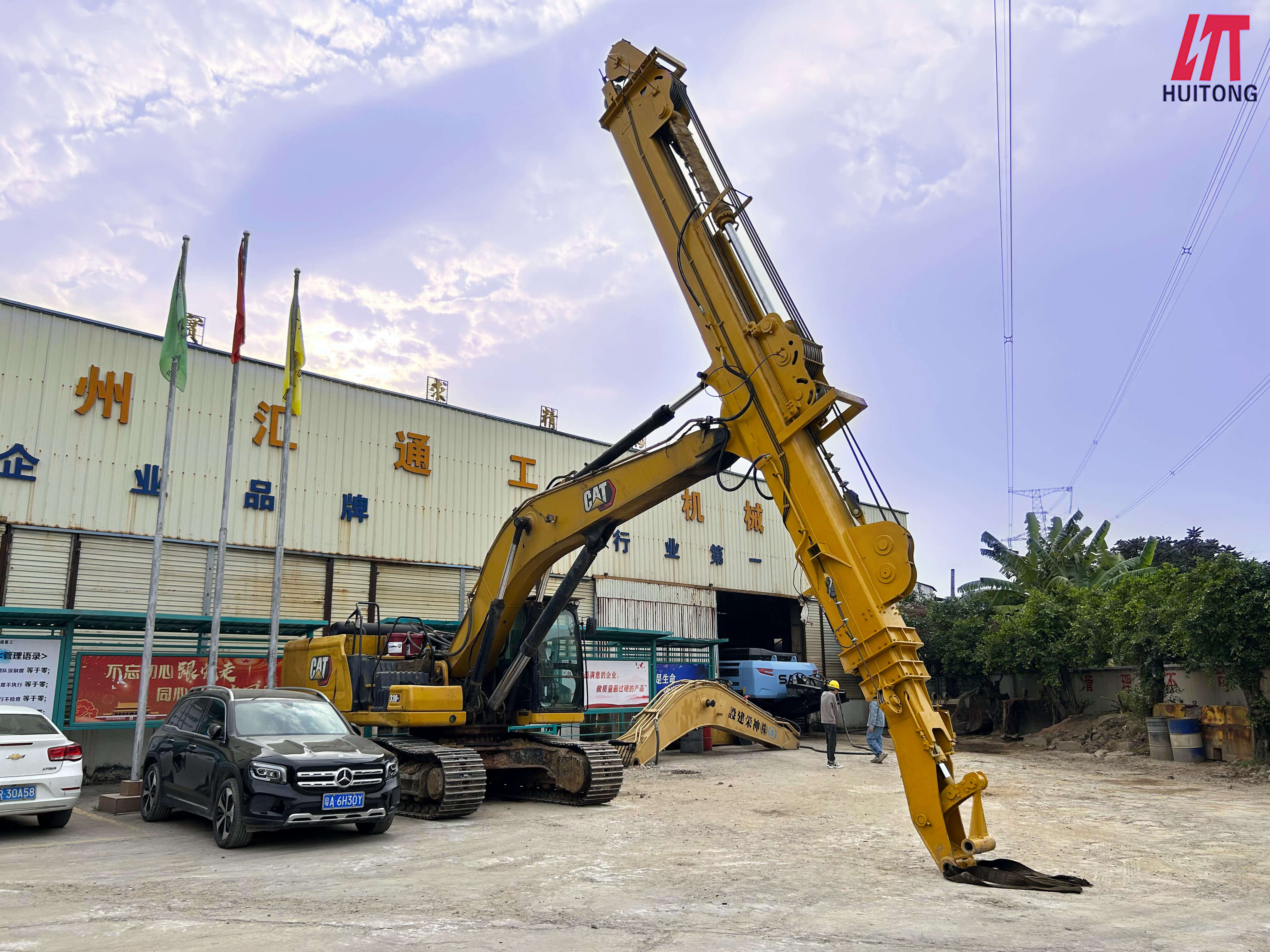 HuiTong
HuiTong  2025-06-25
2025-06-25
As a heavy mechanical equipment, the telescopic arm of the excavator is one of the most critical components. The operation of the telescopic arm not only affects the work efficiency, but also directly affects the safety of the operator. The correct use of the telescopic arm of the excavator is crucial to avoid accidents. This article will list the ten major factors to pay attention to when using the telescopic arm, and analyze the possible hazards and consequences of each factor to help operators avoid risks at work.

The hydraulic system is the core of the operation of the telescopic arm of the excavator. It is very necessary to check the quality and level of the hydraulic oil regularly.
Hazard: Insufficient or leaking hydraulic oil will cause the telescopic arm to fail or even malfunction.
Consequences: It may cause the telescopic arm to fail to work properly, increase the downtime of equipment failure, and even cause sudden failures during operation, endangering the safety of the operator.
During operation, the telescopic arm must remain stable to avoid over-extension.
Hazard: When the telescopic arm is over-extended, it may cause the excavator to tilt or become unstable.
Consequences: In severe cases, the equipment may overturn, causing serious injuries or death to the operator.
Before operating the telescopic arm, check whether the ground is flat and avoid working on unstable ground.
Hazards: Uneven ground may cause the excavator to lose stability and cause tilting during the telescopic arm operation.
Consequences: The tilting of the equipment caused by unstable ground may cause the excavator to overturn and even injure bystanders.
The operating load of the telescopic arm shall not exceed its maximum rated load.
Hazards: Overload operation may cause the hydraulic system to overheat and the telescopic arm to deform.
Consequences: Long-term overload work may cause serious damage to the telescopic arm and even mechanical failure, resulting in downtime and increased maintenance costs.
When operating the telescopic arm, pay special attention to the surrounding environment to avoid colliding with buildings, trees or other obstacles.
Hazards: The telescopic arm is prone to collide with objects when not paying attention, causing equipment damage.
Consequences: Collisions may cause partial damage or serious failure of the equipment, or even secondary injury accidents.
Before the telescopic arm is extended and retracted, make sure that all locking devices are working properly.
Hazard: Failure of the locking device may cause the telescopic arm to move suddenly during operation.
Consequences: Sudden movement of the telescopic arm may cause interruption of operation, damage to the equipment or injury to the operator.
When operating the telescopic arm, be clear about the surrounding visual range and ensure that there are no obstacles blocking the line of sight.
Hazards: Blind spots may lead to misoperation and increase the probability of accidents.
Consequences: Invisible obstacles may be accidentally touched, causing damage to the equipment or personal injury.
During the long-term use of the telescopic arm of the excavator, the steel structure may be fatigued or damaged.
Hazard: Structural damage may cause the telescopic arm to break suddenly.
Consequences: A suddenly broken telescopic arm will cause serious safety hazards to the operator and the surrounding environment, and may cause the equipment to be completely scrapped.
The operation of the telescopic arm should be as smooth as possible, and avoid rapid operation, especially the extension and retraction of the telescopic arm.
Hazard: Rapid operation will cause impact on the hydraulic system and mechanical components, increasing the probability of failure.
Consequence: Frequent rapid operation may cause long-term excessive wear of the equipment, leading to mechanical failure and reducing the service life of the equipment.
Before operating the telescopic arm, it must be confirmed that no one is standing or close to the equipment.
Hazard: If a person is close to or standing in the active area of the telescopic arm, he may be hit by the suddenly moving arm.
Consequence: Improper operation may cause serious injury or death, especially when the telescopic arm is operating.
Correct operation of the telescopic arm of the excavator can not only improve work efficiency, but also effectively avoid various potential safety hazards. The ten precautions listed in this article are key factors that must be paid attention to at all times when operating the telescopic arm. Every operating error may cause equipment damage, work stoppage, and even endanger the life of the operator. By maintaining a high level of vigilance and operating with caution, the risk of accidents can be greatly reduced, ensuring the safety and smooth progress of the construction site.